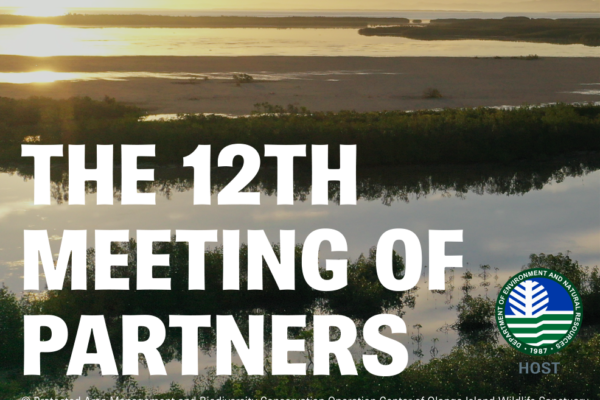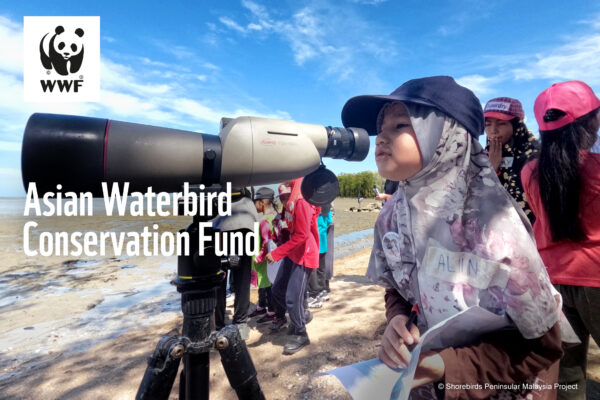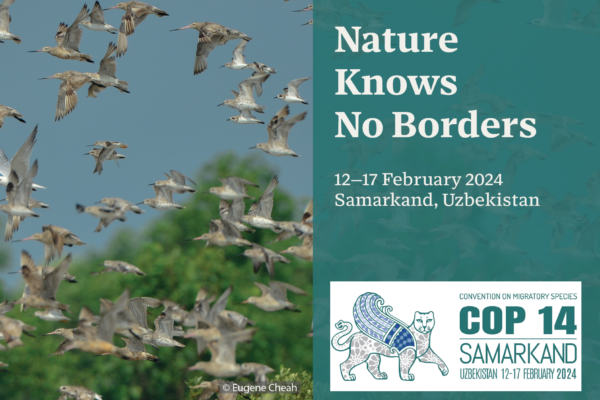-
EAAFP Foundation 2022-2023 Small Grant Fund Reporting Workshop
Discussing a Potential Global Impact of Domestic Migratory Waterbird Conservation Efforts ©EAAFP On January 31st, the Reporting Workshop of the EAAFP Foundation’s…
Continue reading -
EAAFP at CMS COP14: Nature Knows No Borders
The Convention on the Conservation of Migratory Species of Wild Animals (CMS) has stood steadfast as a pivotal intergovernmental partner to the East Asian-Australasian Flyway Partnership (EAAFP)…
Continue reading -
Call for 2024 Application to the Asian Waterbird Conservation Fund (AWCF)
Fion Cheung, AWCF Secretariat The AWCF was established by WWF-Hong Kong in July 2005 to provide financial support for projects at sites of importance for migratory waterbirds (including seabirds) in Asia of the East Asian – Australasian Flyway (EAAF). In late 2019, the AWCF was reformed and two new grants, the WWF Dr Lew Young Grant and the Asian Flyways Initiative Grant (AFI Grant), were set up to extend the support from the EAAF to the Central Asian Flyway (CAF). The goal of the two new Grants is to support projects on the ground in Asia that will lead to the conservation of migratory waterbirds and their habitats in the EAAF and CAF, particularly through partnership with the local community at the site. WWF Dr Lew Young Grant Dr Lew Young was a passionate conservationist dedicated in the conservation of Asia’s wetlands and waterbirds. When he was with WWF-Hong Kong to manage the Mai Po Nature Reserve from 1991 to 2008, he was actively involved in the designation of Mai Po Inner Deep Bay Ramsar Site, launched the wetland management training programme and created education programmes for students and visitors. In 2008, Dr Young was appointed as the Senior Regional Advisor for Asia and Oceania for the Ramsar Secretariat and provided support on the strategic development and effective implementation of the Convention. Dr Young joined the East Asian-Australasian Flyway Partnership Secretariat as Chief Executive in 2018. During his term, he developed the 2019-2028 Strategic Plan and the DPR Korea also joined both the Ramsar Convention and the Partnership. On 5th of March, 2019, Dr. Young passed away while on a working trip to develop conservation actions for the intertidal wetlands of the Yellow Sea in Beijing. In 2019, WWF-Hong Kong set up the WWF Dr Lew Young Grant for his whole-life dedication and significant contribution to wetland conservation. The maximum amount is US$10,000 per one-year project. AFI Grant In 2019, WWF established the Asian Flyways Initiative to coordinate among the various organizations and stakeholders to ensure that both the EAAF and the CAF are conserved so that ecologically connected stepping-stone corridors can be sustained for the long-distance migratory birds, and the wetlands are managed for nature and people. To provide support to the conservation work of wetlands and migratory birds in these two flyways, WWF-Hong Kong established the AFI Grant. The maximum amount is US$5,000 for one-year projects and US$5,000/year for multiple-year projects (2-3 years). More information about the AFI can be found here. There is a single call for application to the AWCF each year. The deadline for the 2024 application is 3 March 2024. For details, please check: https://www.wwf.org.hk/en/reslib/programme_resources/water_wetlands/?16263/res-Asian-Waterbird-Conservation-Fund or contact the AWCF Secretariat by e-mail awcf@wwf.org.hk. 亞洲水鳥保育基金現正接受申請 張嘉穎, 亞洲水鳥保育基金秘書處 亞洲水鳥保育基金(以下簡稱AWCF)於2005年7月成立,目的是為在東亞—澳大利西亞遷飛區(EAAF)上,於亞洲重要地點上進行的遷徙水鳥(包括海鳥)的保育項目提供資助。AWCF於2019年年底進行了調整,並在旗下成立了「WWF 楊路年博士基金」及「亞洲遷飛區保育行動基金」,希望把資助覆蓋的範圍從EAAF延伸至中亞遷飛區(CAF)。兩個新基金的宗旨是支持在亞洲地區進行的在地保育項目,特別是透過與當地社區合作的項目,保育EAAF和CAF上的遷徙水鳥以及牠們賴以生存的濕地生境。 WWF 楊路年博士基金 楊路年博士是一位一直醉心於亞州濕地及水鳥保育工作的自然保育學者。在1991至2008年,他受聘於世界自然基金會香港分會,負責管理米埔保護區。在此期間,楊博士積極參與把米埔及內后海灣濕地列入國際重要濕地(即拉姆薩爾濕地)的工作,同時開展了濕地管理培訓項目以及針對學生及公眾人士的環境教育工作。 2008年,楊博士出任「拉姆薩爾公約秘書處」亞太區高級主任,專責支持公約的策略性發展及有效執行。十年後,楊博士擔任「東亞—澳大利西亞遷飛區伙伴關係(EAAF Partnership)」執行總裁一職。在任期間不但完成了「東亞—澳大利西亞遷飛區 2019-2028年保育策略」,還協助朝鮮加入成為拉姆薩爾公約的締約國和EAAF Partnership 的合作伙伴。 在2019年3月5日,楊博士在北京開會討論為黃海地區的潮間濕地定立保育行動期間不幸去世。世界自然基金會香港分會特別為他設立「WWF 楊路年博士基金」,以紀念楊博士為水鳥及濕地保育作出的傑出貢獻。基金的最高資助金額為10,000美元(一年項目)。 亞洲遷飛區保育行動基金 在2019年,世界自然基金會開始了「亞洲遷飛區保育行動」,以聯合EAAF和CAF上的不同團體和利益相關者,共同保護兩條遷飛路線上的重要地點,讓長途遷徙鳥類繼續停棲於合適地點,也希望人類可永續利用這些生境。 為支持EAAF和CAF上的濕地和遷徙鳥類的保育工作,世界自然基金會香港分會設立了「亞洲遷飛區保育行動基金」。基金的最高資助金額為5,000美元(一年項目)或5,000美元/年(2-3年項目)。 如欲了解更多關於「亞洲遷飛區保育行動」的資料,請按此(網站只提供英文)。 每年基金只接受一次申請,2024年度的申請截止日期為2024年3月3日。 欲知詳請,請瀏覽: https://www.wwf.org.hk/reslib/programme_resources/water_wetlands/?16263/res-Asian-Waterbird-Conservation-Fund 目前申請表格只設英文版,如欲提交中文申請書,請聯絡亞洲水鳥保育基金秘書處 awcf@wwf.org.hk 。
Continue reading











